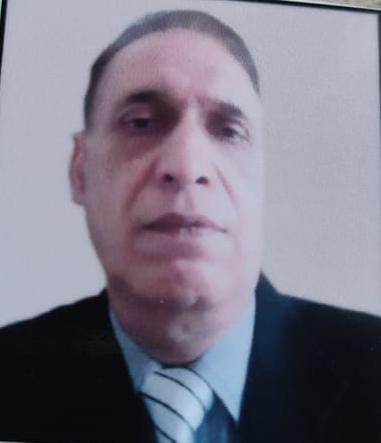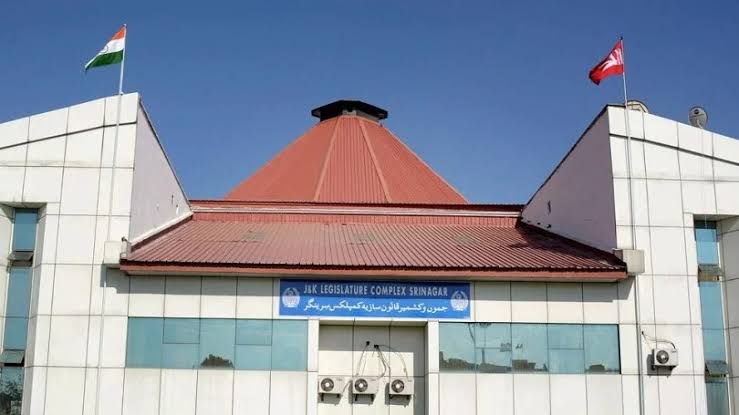The practice of executive nominations to legislative bodies is undemocratic and unhealthy.
“The executive exercising its powers in nominating members to Legislative Assembly without consultation of political parties with majority will not only be undemocratic but also immoral”

Latief U Zaman Deva
The provision for nominations of representatives to legislative bodies is not new in India. But there are reasons why the Jammu and Kashmir case of nominations is completely flawed.
The provision for the nomination of two representatives from the Anglo-Saxon community to the Lok Sabha against its total strength of 543 members is in principle nominal and unlikely to impact the outcome of government formation. The logic for an exception was attributed to the small population of the community, its spread across India, and inability of a member from the community to get elected in general elections given the legacy of foreign rule linked with them.
In stark contrast, the provisions under the J&K Reorganisation Act 2019 & J&K Reorganisation ( Amendment ) Act 2023 are for five representatives, including two women, two migrants, and one Displaced Person ( DPs) from Pakistan Administered J&K (PAK) in a House of Ninety members. No plausible logic is forthcoming from the provisions of law for reservations by nominations for Migrants and DPs. This will be a bad precedent for demands by other unrepresented sections of the society.
Migrants & Counter demands
Before migration commenced in 1990 due to the unimaginable collapse of the political and civil organs of the State the Kashmiri Pandits representing less than five percent of the Valley population were getting adequate electoral representation in the Legislative Assembly, Legislative Council, and the Council of Ministers.
The notables from 1948 to 2008 are Sham Lal Saraf, D P Dhar, Shiv Narian Fotadar, Munwar Nath Koul, Makhan Lal Fotadar, M K Tickoo, P L Handoo and Raman Mattoo.
Despite living outside their native regions, migrants often remain registered as voters in their original Assembly constituencies. They are allowed to vote from their current locations, even if they’re outside the Kashmir Valley.
The provision for nominating representatives from certain communities is informally justified by the argument that it would be nearly impossible for a member of these communities to be elected in the Valley due to their dispersed population spread across Kashmir.
In the Dogra belt (comprising the districts of Kathua, Samba, Jammu, and Udhampur), excluding the 1.5 lakh Kashmiri migrants, Muslims make up 8.86% of the population, while Sikhs constitute 5% (according to the 2011 Census). Despite these demographics, there have been rare instances of minority representation:
Sheikh Abdul Rehman was once elected from Jammu City to the Legislative Assembly on a Jan Sangh mandate. Rangeel Singh was elected twice as a Congress candidate. Parduman Singh was elected once as a Congress candidate.
This situation raises questions about how to address the demands for political representation of minorities in this region. More broadly, it prompts consideration of how this issue might be approached across India.
Displaced Persons
The Displaced Persons are those Permanent residents of the erstwhile State of Jammu and Kashmir, who in the wake of partition and thereafter, migrated from Pakistan-administered Kashmir and Gilgit Baltistan to the territories on the Indian side. This includes persons who were displaced due to the 1965 and 1971 wars between India and Pakistan.
In the aftermath of 1947 and the years that followed, 31,619 displaced families reported their arrival in Jammu. Of these, 26,319 chose to resettle within Jammu and Kashmir, while the remainder opted to settle elsewhere in India.
According to the 1941 census, the non-Muslim population in the districts of Mirpur, Poonch, and Muzaffarabad was 120,858. To estimate the current population of displaced persons (DPs) in the Union Territory, we need to consider several factors: a)the population growth based on the 1931-1941 decadal growth rate; b) the BJP’s claim of approximately 20,000 casualties during the partition violence; c) non- Muslim population of Tehsils Uri, Karnah, Poonch, Surankot & Mendhar and d) the inclusion of families uprooted during the 1965 and 1971 wars. Taking these factors into account, the current total population of DPs in the Union Territory may be close to 500,000.
These displaced people share ethnic and linguistic similarities with the Dogra and Punjabi populations of the Jammu Division. The level of assimilation is so high that it’s now difficult to distinguish between locals and the descendants of refugees from 1947, 1965, and 1971.
Given this high degree of integration, there appears to be no justifiable grounds for reserving a separate Assembly seat for this group.
Women quota.
This provision was incorporated in the Constitution of J&K for the nomination of two women to the J&K Legislative Assembly in the face of little representation to them in the House. Now by the Constitutional Amendment Act 2023, 33% of seats have been reserved for women, effective from 2029. Therefore, there is no reason for perpetuating the quota.
Law on Nominations
Under The J&K Reorganisation Act 2019 ( Act No 34 of 2019) the Lt Governor may nominate two members to the Legislative Assembly ( LA) to provide representation to women should in his opinion women be not adequately represented. Under The J&K Reorganisation (Amendment) Act 2023 ( Act No 35 of 2023) he has powers to nominate two members from the community of Kashmiri Migrants and one member from DPs from Pakistan Occupied J&K to the LA.
According to The Government of Union Territories Act 1963, the central government may nominate not more than three persons to be the members of the LA of a Union Territory.
While under Law specifically applicable to J&K, the powers are exercisable by the Lt Governor and under general law for UTs the power vests in the central Government. The decision of the Supreme Court validating the powers of the Central Government in the matter of nominations to the Puducherry LA has its base in the Law applicable to the said UT.
In J&K, instead of the central government, it is the Lt Governor who in general parlance is supposed to act on the aid and advice of the Council of Ministers headed by the Chief Minister. Can he proceed in the matter of nominations to LA at his discretion begs an answer?
Compliance with the rule book, precedents, decisions of the Apex Court on the subject & demands of common wisdom in a federal setup should be primary factors while weighing a decision on the panel the UT government may submit for approval.
Already, there is enough bias in the structure and design of the Jammu and Kashmir elections as was unfolded in the tamed gerrymandering of constituencies, resulting in carving out more Hindu majority constituencies where the Hindus are close to 50 percent. Thus, there are 34 Assembly segments at 37.77 % of 90 seats for population not exceeding 28.80 % of the total UT population. Not yet satiated & hell-bent on hiking it from 34 to 39 in a House of 95 Members shall lead to 41% representation to 28.80% population.
This is a cruel joke.
Democratic Method
The practice of allowing the executive branch to nominate members to elected bodies is fundamentally undemocratic. It undermines the principle of government formation through people’s elected representatives.
Union Territories (UTs) were initially created for areas liberated from colonial powers after India’s independence. To align these UTs’ administration with the rest of India, the concept of nominating members to legislative bodies was introduced. However, this practice has persisted for decades, long after its original objectives have been met.
The continuation of this nomination system raises concerns about democratic representation. If nominations are to be retained, a more democratic approach would be to have the elected members of the UT Assemblies vote to fill these positions, rather than having them appointed by the executive.
Now that the provision has been set, would the Lt. Governor act in a partisan manner or like a statesman and set a healthy precedent?(Courtesy Kashmir Times)
The author is an IAS officer ( Retd) & former Chairman J& K Public Service Commission.

